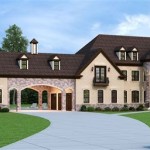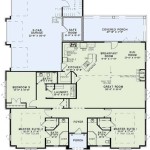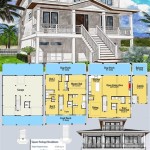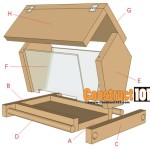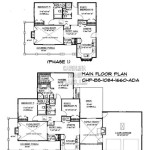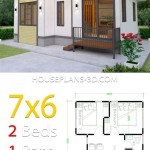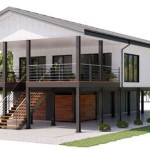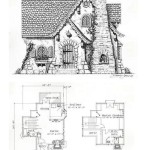Small House Plans with Wrap Around Porch and Garage Flooring: A Comprehensive Guide
The allure of small house plans combined with the practicality of a wrap around porch and attached garage is undeniable. These designs offer a balance of efficient living space, outdoor enjoyment, and secure vehicle storage, making them attractive to a wide range of homeowners, from first-time buyers to those looking to downsize. The appeal lies in the efficient use of space, the aesthetic charm of the porch, and the functional benefit of an attached garage. This article explores the key considerations involved in planning and selecting a small house plan featuring these elements, with a particular focus on garage flooring options.
When considering a small house plan, understanding personal needs and lifestyle is paramount. The layout must effectively accommodate daily routines while maximizing available square footage. A wrap around porch adds significant value by providing an extended outdoor living area, ideal for relaxation, socializing, and enjoying the surrounding landscape. The attached garage further enhances convenience and security, offering shelter for vehicles and additional storage space. Successfully integrating these features requires careful planning and attention to detail.
The size of the house significantly impacts the design and functionality of the porch and garage. Smaller footprints necessitate creative solutions to ensure adequate living space and comfortable outdoor areas. The architectural style also plays a crucial role in defining the overall aesthetic. Whether opting for a traditional farmhouse, a cozy cottage, or a modern minimalist design, the integration of the porch and garage should complement the chosen style and enhance the property's curb appeal.
Key Considerations for Small House Plans with Wrap Around Porch
One of the primary benefits of a wrap-around porch is its ability to extend the living space beyond the confines of the interior walls. This creates a seamless transition between indoor and outdoor areas, promoting a relaxed and inviting atmosphere. The porch can serve as an additional space for dining, entertaining, or simply unwinding after a long day.
Designing a wrap around porch involves careful consideration of several factors. The width of the porch is crucial, as it determines the usability of the space. A narrow porch may feel cramped, while a wider porch offers more flexibility for furniture placement and movement. The placement of the porch in relation to the house and the surrounding landscape is also important. Ideally, the porch should be positioned to capture scenic views and provide ample shade during the hottest parts of the day.
The materials used for the porch construction also contribute significantly to the overall aesthetic and durability. Wood is a classic choice, offering a warm and inviting appearance. However, wood requires regular maintenance to prevent rot and decay. Composite decking materials provide a low-maintenance alternative, offering the look of wood without the upkeep. Other options include concrete, brick, and stone, each with its own unique advantages and disadvantages. The choice of materials should be based on personal preferences, budget, and the overall design of the house.
In terms of structural design, the porch roof can be an extension of the main house roof or a separate structure. A continuous roof line creates a more cohesive look, while a separate roof allows for greater design flexibility. The roof pitch and overhang should be carefully considered to provide adequate protection from the elements. Columns or posts are essential for supporting the porch roof and can be chosen to complement the architectural style of the house. Simple wooden posts provide a rustic charm, while more ornate columns add a touch of elegance. Railings are also important for safety and can be chosen to enhance the aesthetic appeal of the porch. Wrought iron railings offer a classic look, while simple wooden railings provide a more contemporary feel.
Integrating the Garage into the Small House Plan
An attached garage offers convenience and security, protecting vehicles from the elements and providing additional storage space. However, integrating a garage into a small house plan requires careful planning to minimize its visual impact and maximize its functionality.
The placement of the garage in relation to the house is a key consideration. A front-facing garage can dominate the facade of a small house, detracting from its curb appeal. A side-entry garage is often a more aesthetically pleasing option, as it minimizes its visibility from the street. A detached garage can also be considered, but it lacks the convenience of an attached garage.
The size of the garage should be determined by the number of vehicles to be accommodated and the amount of storage space required. A single-car garage may be sufficient for some homeowners, while others may need a two-car garage or even a larger space. Additional storage space can be incorporated into the garage design through the use of shelves, cabinets, and overhead storage racks.
The garage door is another important design element. A simple, functional garage door can blend seamlessly with the house's facade, while a more elaborate door can add a touch of character. The material and style of the garage door should complement the overall design of the house. Insulated garage doors can help to improve energy efficiency and reduce noise levels.
Choosing the Right Garage Flooring
Garage flooring is an often-overlooked aspect of garage design, but it plays a crucial role in the overall functionality and appearance of the space. The right flooring can protect the concrete subfloor from damage, enhance the aesthetic appeal of the garage, and provide a safe and comfortable surface for working and walking.
Several factors should be considered when choosing garage flooring. Durability is essential, as the flooring must be able to withstand the weight of vehicles, the impact of dropped tools, and the abrasion from tires. Resistance to chemicals, such as oil, grease, and gasoline, is also important to prevent staining and damage. Slip resistance is another critical factor, as it helps to prevent accidents. Ease of maintenance is also a key consideration, as the flooring should be easy to clean and resistant to stains and spills.
Epoxy coatings are a popular choice for garage flooring, offering a durable, chemical-resistant, and aesthetically pleasing surface. Epoxy coatings are available in a wide range of colors and finishes, allowing homeowners to customize the look of their garage. However, epoxy coatings require careful preparation of the concrete subfloor to ensure proper adhesion and longevity. The application process can be time-consuming and may require professional installation.
Garage floor tiles provide a modular flooring solution that is easy to install and maintain. Tiles are typically made of durable plastic or rubber and are available in a variety of colors and patterns. Garage floor tiles offer excellent slip resistance and can be easily replaced if damaged. The interlocking design of the tiles allows for quick and easy installation, and no special tools or skills are required.
Concrete sealers provide a more affordable option for protecting the concrete subfloor. Concrete sealers penetrate the concrete and create a protective barrier against moisture, chemicals, and stains. Sealers are available in a variety of formulations, including acrylic, epoxy, and polyurethane. The application process is relatively simple, but regular reapplication may be necessary to maintain the protective barrier.
Rubber mats provide a non-slip and comfortable surface for working in the garage. Rubber mats are available in a variety of sizes and thicknesses and can be easily cut to fit any space. Rubber mats are resistant to water and chemicals and provide excellent cushioning for standing and working. However, rubber mats can be difficult to clean and may not be suitable for areas where vehicles are parked.
Ultimately, the best garage flooring option depends on individual needs and preferences. Consider the budget, the level of durability required, the desired aesthetic, and the ease of installation and maintenance when making a decision.
In conclusion, designing a small house plan with a wrap-around porch and attached garage involves careful consideration of various factors. The successful integration of these features requires a balance of practicality, aesthetics, and personal preferences. The choice of materials, the layout of the space, and the selection of appropriate garage flooring are all important elements to consider in creating a functional and enjoyable living environment.

Wrap Around Porch House Plans For A 4 Bedroom Country Home

House Plans With Wrap Around Porches Southern Living

Barndominium Style House Plan 2 Beds Baths 1260 Sq Ft 430 347 Houseplans Com

Ranch Style House Plan 2 Beds Baths 988 Sq Ft 126 246 Houseplans Com

House Plans With Wrap Around Porches Southern Living

Open Floor Plan With Wraparound Porch Max Fulbright Designs

House Plans Floor Blueprints

Affordable One Story House Plans With Attached Car Garage

House Plans With Wrap Around Porches Southern Living

Open Floor Plan With Wraparound Porch Max Fulbright Designs
Related Posts

